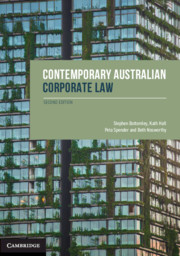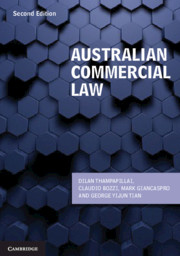Refine search
Actions for selected content:
36807 results in Cambridge Textbooks
15 - Umbrella Clauses
-
- Book:
- International Investment Law and Arbitration
- Published online:
- 17 March 2021
- Print publication:
- 11 March 2021, pp 432-457
-
- Chapter
- Export citation
18 - Costs and Legal Fees
-
- Book:
- International Investment Law and Arbitration
- Published online:
- 17 March 2021
- Print publication:
- 11 March 2021, pp 513-535
-
- Chapter
- Export citation
8 - The Arab-Israeli Conflict
-
- Book:
- The Israel-Palestine Conflict
- Published online:
- 08 March 2021
- Print publication:
- 11 March 2021, pp 175-208
-
- Chapter
- Export citation
Copyright page
-
- Book:
- The Israel-Palestine Conflict
- Published online:
- 08 March 2021
- Print publication:
- 11 March 2021, pp iv-iv
-
- Chapter
- Export citation
16 - Defences
-
- Book:
- International Investment Law and Arbitration
- Published online:
- 17 March 2021
- Print publication:
- 11 March 2021, pp 458-489
-
- Chapter
- Export citation
2 - Investment Contracts and Internationalisation
-
- Book:
- International Investment Law and Arbitration
- Published online:
- 17 March 2021
- Print publication:
- 11 March 2021, pp 37-56
-
- Chapter
- Export citation
1 - The Land and its Lure
-
- Book:
- The Israel-Palestine Conflict
- Published online:
- 08 March 2021
- Print publication:
- 11 March 2021, pp 1-14
-
- Chapter
- Export citation
6 - Applicable Laws
-
- Book:
- International Investment Law and Arbitration
- Published online:
- 17 March 2021
- Print publication:
- 11 March 2021, pp 153-172
-
- Chapter
- Export citation
Index
-
- Book:
- International Investment Law and Arbitration
- Published online:
- 17 March 2021
- Print publication:
- 11 March 2021, pp 617-626
-
- Chapter
- Export citation
7 - Arbitrators
-
- Book:
- International Investment Law and Arbitration
- Published online:
- 17 March 2021
- Print publication:
- 11 March 2021, pp 173-232
-
- Chapter
- Export citation
Preface to the Fourth Edition
-
- Book:
- The Israel-Palestine Conflict
- Published online:
- 08 March 2021
- Print publication:
- 11 March 2021, pp ix-x
-
- Chapter
- Export citation
Glossary
-
- Book:
- The Israel-Palestine Conflict
- Published online:
- 08 March 2021
- Print publication:
- 11 March 2021, pp 283-296
-
- Chapter
- Export citation
9 - Provisional Measures
-
- Book:
- International Investment Law and Arbitration
- Published online:
- 17 March 2021
- Print publication:
- 11 March 2021, pp 250-275
-
- Chapter
- Export citation

The Israel-Palestine Conflict
- A History
-
- Published online:
- 08 March 2021
- Print publication:
- 11 March 2021
-
- Textbook
- Export citation

Contemporary Australian Corporate Law
-
- Published online:
- 06 March 2021
- Print publication:
- 28 October 2020
-
- Textbook
- Export citation

Bionanotechnology
- Concepts and Applications
-
- Published online:
- 04 March 2021
- Print publication:
- 04 February 2021
-
- Textbook
- Export citation

Australian Commercial Law
-
- Published online:
- 04 March 2021
- Print publication:
- 24 June 2020
-
- Textbook
- Export citation

A Concise History of Australia
-
- Published online:
- 04 March 2021
- Print publication:
- 03 August 2020
-
- Textbook
- Export citation

Principles of Integrated Marketing Communications
- An Evidence-based Approach
-
- Published online:
- 25 February 2021
- Print publication:
- 23 February 2021
-
- Textbook
- Export citation
Part 2 - Practice
-
- Book:
- Crime Prevention
- Published online:
- 22 April 2021
- Print publication:
- 23 February 2021, pp 113-114
-
- Chapter
- Export citation
